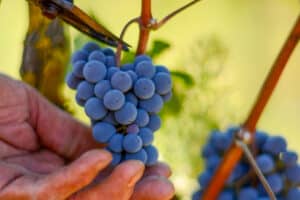Oenotourism in Epirus is one of the alternative forms of tourism that are gaining more and more ground among visitors and this comes as no surprise as it is an area of great oenological potential. It is surely no coincidence that since 1974 there is a Protected Designation of Origin (PDO) wine, the one in Zitsa of Zagori–also the Wine Route of Epirus is one of the eight certified Wine Routes of Northern Greece. Famous wineries and estates have been harvesting the land of Epirus for decades, producing high-quality wine from indigenous varieties with very special characteristics. As for the wine produced on the slopes of Metsovo, we could say it has the “seal of approval” of the brown bear as until a few years ago the bears used to get in the wineries and pick the grapes! Discover extraordinary wineries in mountain vineyards blessed by the Ionian sea breeze and the thick snows of Pindos.
The protagonists of the viticultural tradition in Epirus are primarily located on the Regional Units of Ioannina and Thesprotia, with the Katogi Averoff, Zoinos, Markatseli, as well as the Glinavos Estate being the ambassadors of the Epirus wines.
HIGH UP ON METSOVO:
Katogi Averoff is the most famous winery in Epirus. In the late ’50s, benefactor Evangelos Averoff planted the first Cabernet Sauvignon vines on mountainous and steep slopes near Metsovo and then bottled the wine in his home’s basement in Metsovo. What followed was the creation of the winery, a huge project for the economic and cultural development of the region and the replantation involved old slopes of Epirus that were until then abandoned. In the cellar of today’s visitable winery you are invited to follow a route with audiovisual media and see the 1,200 oak-barrel cellar containing wine from indigenous and international varieties such as the Cabernet Sauvignon, Merlot, Syrah, Pinot Noir, Traminer, as well as the outstanding local Vlach Debina.
The vineyards in Metsovo – where the grapevines of Katogi Averoff are located – produces “Product of Geographical Indication (PGI)” wine. Indeed, the vineyards of Yiniets (a Vlach word to describe the vineyard), are the most mountainous vineyards in Greece, nestled at an altitude of 950-1050m, where the grapes are slow to ripen. The harvest takes place in early to mid-October and this is due to the special climatic conditions, since the pouring rains and heavy snows of winter and the cool summers with the almost daily storms place the harvest in the heart of autumn.
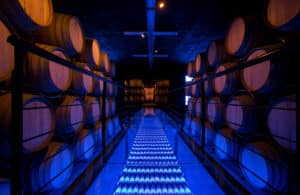
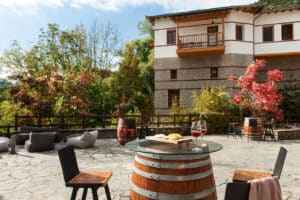
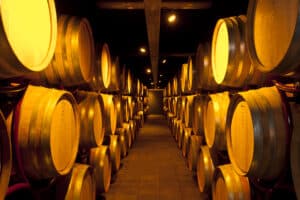
THE WINES OF ZITSA:
The plateau of Zitsa in Zagori is another powerhouse for the wines of Epirus. The organic cultivation of white and red indigenous varieties as well as the special climatic conditions have created a tradition in producing wine with intense dioxide, an award-winning wine with the Protected Designation of Origin (PDO) certification.
Three varieties, praised by philhellene Lord Byron, make up the viticulture in Zitsa. The native white debina variety produces refined sparkling wines, the Vlach variety creates wine of medium depth, bright with multiple aromas and subtle tannins, while the bekari variety leads to deep colors, a moderate aromatic intensity and sharp tannins. At an altitude of 700m, the grounds cultivated in Karitsa, Protopappa, Gavrisi, Lipsoga and Klimatia are steep limestone soils with good drainage, receiving the influence of sea breeze from the Ionian.
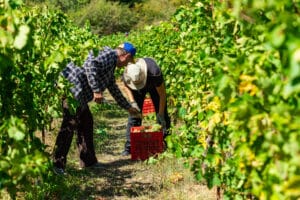
In the mountainous wine-growing zone of the Zoinos winery the goal is the quality of the vineyard: the fermentation with wild yeasts is practiced, something that enhances the special features of each wine and the dynamics of the variety and the ecosystem. It is without doubt that the sparkling red and white wines as well as the amber wine produced from the white debina variety that you will taste in the winery will amaze you!
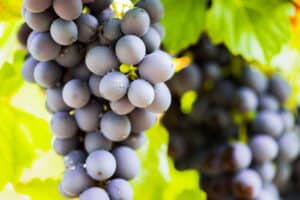
They say that wine gets better with time. The people up on Profitis Ilias of Zitsa know this too well: the Glinavos Estate has been making exceptional and multi-award winning wine since 1978. In the underground cellar with the 400 oak barrels, the PDO debina variety with its delicate, high natural acidity and low alcohol content is definitely the protagonist.

IT’S WINE O’CLOCK IN THESPROTIA:
The tradition of Epirus in viticulture extends to its northern tip the Municipality of Filiates. At an altitude of 150-300m on the steep slopes of Mount Farmakovouni, the Markatseli family has long been cultivating white and red indigenous and international varieties such as Chardonnay, Malvasia Aromatica, Asproudi, Athiri, Agiorgitiko, Mavroudi, Merlot and Syrah. Get to know them!
THE TSIPOURO OF EPIRUS:
In addition to its wines, Epirus is famous for its distinct tsipouro, also a Product of Geographical Indication (PGI). It is defined by its aromatic intensity, it is soft and “round” in the mouth and you will usually find it as a 12-month aged distillate in oak barrels. We suggest that you try it at the end of a dinner, as it tastes resembles the brandy due to the aging in the barrel. Find it at the distillery of Molyvdoskepasti, while up in Tzoumerka you should try a similar version of it, the “zabella”.
